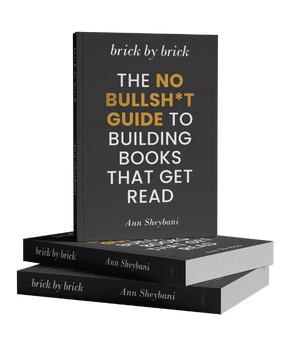I’ve got two points I’d like to make. Think of this as the CliffsNotes version of this post.
1. Read The New York Times Book Review to educate yourself on the craft of writing.
2. Don’t try to be everything to everyone because you’ll lose every time.
Here’s the longer version.
You’ve probably heard me say this before: Read The New York Times Book Review. The Book Review is essentially a series of free tutorials in which professional writers critique the work of each other. I like to think of these reviews as free writing lessons from blunt people. Reviewers describe—in often stunning detail—what makes a recently published book powerful, or lyrical, or what makes the thing a complete disaster, suitable only to line a birdcage. Believe me, these people don’t pull punches.
Occasionally, I’ll come across a review that describes an issue within a book that I, too, have been struggling with. I’ll read on and see how the reviewer thinks the problem could’ve been solved, and, violá; I’ve got myself a free writing lesson.
By reading the review, I also get lots of ideas for my own writing. I’m amazed at how creative people are.
Now, there’s a subsection of The Book Review, a column called By The Book, that I really dig. Each week, a selected author responds to a series of questions about his or her own reading habits. Not only do I get great book recommendations–as if I need any more–but also some pretty terrific insight into the interview subject. (You want to get to know someone fast, study their bookshelf.) Usually, I find myself wanting to learn more about them and their work.
This week, essayist Sloane Crosley, best known for her book I Was Told There’d Be Cake (and no, I haven’t read it yet even though I adore the title) was up on deck.
In response to the question, “What books are on your nightstand?”, she gives a short list and ends with this statement: “I try not to keep too many books on my nightstand or else I go to sleep and wake up feeling inadequate. I don’t need visual aids for this.”
I don’t know about you, but I like her. There’s a person in there. Which got me thinking.
Sloane’s fun, personality-driven answers were the antithesis of Hillary Clinton’s, who was featured in the column sometime back. I found myself so put off by Hillary’s answers at the time because they clearly weren’t hers, but those of her handlers. They were simply using the space for political advantage, as a way of appealing to her constituents, whom, I’d assume, being that I’m about as savvy as a doorknob in this arena, to be middle-class Americans with a slightly liberal bent. In other words: See, I like the same things you do, which means we’re cut from the same cloth.
Except not.
I’m sorry, there’s no way someone with Hillary’s educational background or intellectual/political bent reads mass-market superstars Sue Grafton or Harlan Coben in her non-existent spare time. Even the mention of Toni Morrison and Alice Walker–two of the best African American writers out there– felt pollster-approved, a deft attempt at painting in just the right amount of (acceptable) color. Suburban vanilla, with a fudge ripple twist–that’s what Hillary seems to be about, or at least did.
It’s for this reason alone–the willingness to be who he truly is, no matter how repulsive–that got DT into the goddamned White House, as wrong as that is.
If you won’t show us who you really are, what does that mean? How bad must the “truth” be? That’s the question that killed Hillary.
And here’s my point. (Yes, I actually have one.) When you try to appeal to the masses, you lose. You don’t just lose for yourself, you lose for those you’re meant to serve. Sure, you may put some people off with your off-color humor, or your Jesus bent, or whatever it is you think you’ve got to manage, cover up with platitudes or generalities, smooth over with a thick coat of bullshit, but look where DT ended up. And Hillary.


